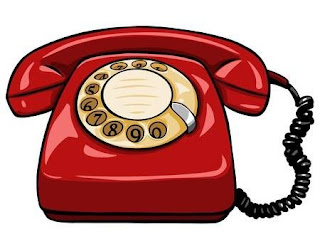When kids approach that transitional age of sixteen, their main objective is to secure a driver's license. This is their introduction to independence. No more waiting for Mom or Dad to drive them to the mall or movie theater . They can simply jump in the car and drive themselves there. This, of course, is only possible if they actually have a car to drive.
Most of the kids of my generation relied on their parent's car during their initial driving days. So, you didn't see too many young drivers sitting behind the wheel of a Corvette or Shelby Mustang. Your first ride was usually an older sedan like a Ford LTD or a Pontiac Bonneville. It really didn't matter what you were driving just as long as you were driving.
My first ride came in the form of my mother's 1977 Ford LTD II. It actually had good amount of style for "your parent's" car. And as a bonus, it came with air conditioning. I know it might sound surprising to today's kids, but back in the day air conditioning was not a guarantee. This was mainly due to the extra cost of AC. The average wage was much less than today's standard and many people passed on the AC option because it was a luxury that they just couldn't afford.
My Dad's 1972 Chevy pick-up truck didn't come with AC. So, on those hot summer days, you rolled the windows down and surrendered yourself to the blast of 95-degree humidity that immediately followed. There was also a small wing window that you could open to precisely direct the air to you. And if you really wanted to feel the full effect, you could open up a vent via the dashboard heating/cooling controls. Air was pulled in through vents just below the outside windshield and delivered to the cabin of the vehicle. It was the direct opposite of traditional air conditioning. Imagine sitting atop your home's outdoor AC unit. It was very similar to that. But it at least there was air flow...
Today's new cars usually come with great sound systems that need no upgrades or alterations. But the cars of my youth usually came with a basic AM/FM stereo. The stock speakers were cheap and could easily blown out if you cranked Led Zeppelin past "5" on the volume knob. So, the first thing you did after getting your car was head down to Luskin's (the self-proclaimed "cheapest guy in town") to shop for a new Kenwood cassette deck and set of JBL speakers.
Cars didn't usually come with power windows. So, in order to roll the window up or down, you had to crank a handle that was located near the inside door handle. Rolling down the passenger side window required you to lean across the interior of the car and awkwardly turn the window crank. The first time I got a car with power windows, I felt like I had moved up a notch in the social class. Then one day, the motor burned up on my driver's side window and the party was over. I remember having to open up my door to hand money to toll booth operators or McDonald's drive-thru cashiers. And I always felt the need to explain that the power window was broken as if they couldn't figure it out.
And there were no GPS's back in the day. If you were lost, you might have to rely on a paper map. When I started my first field service job, I worked in the Washington DC area. I usually had a large paper map strewn across the front passenger seat. At every red light, I would pick it up and try to determine where my next turn would be. Of course, there was also an option to stop and ask someone for directions. But I was forever haunted by that scene in National Lampoon's "Vacation" where Chevy Chase stops off in Chicago to ask directions to Wally World. No thanks, I'll stick with my map.
The seats of most cars back in my day were made of either cloth or some type of "fake leather" vinyl. On a mid-summer day, the vinyl would get hot enough to fry an egg. Many times, while wearing shorts, I would plop my husky ass into the driver seat only to immediately jump out when the seat delivered a 3rd degree burn to the back of my leg.
Some other luxuries that weren't always available back in the day were automatic transmissions, power steering and power brakes. These are things that we really take for granted today. The dashboard of some of today's cars resemble a the cockpit of jet compared to the cars of yesterday. Most of these items are standard options on today's vehicles. Of course, with all of these nice features, the price of today's new cars have increased dramatically over the years. Most of today's cars cost more that the average home from my childhood.
Who knows, maybe 50 years from now, kids will be telling stories about how they drove cars with combustible engines and rubber tires. Perhaps they'll remember a time when you actually drove a car instead of flying one. You never know....
kw




